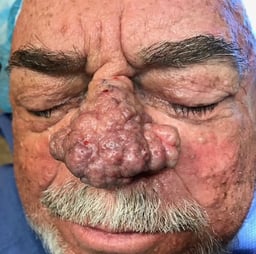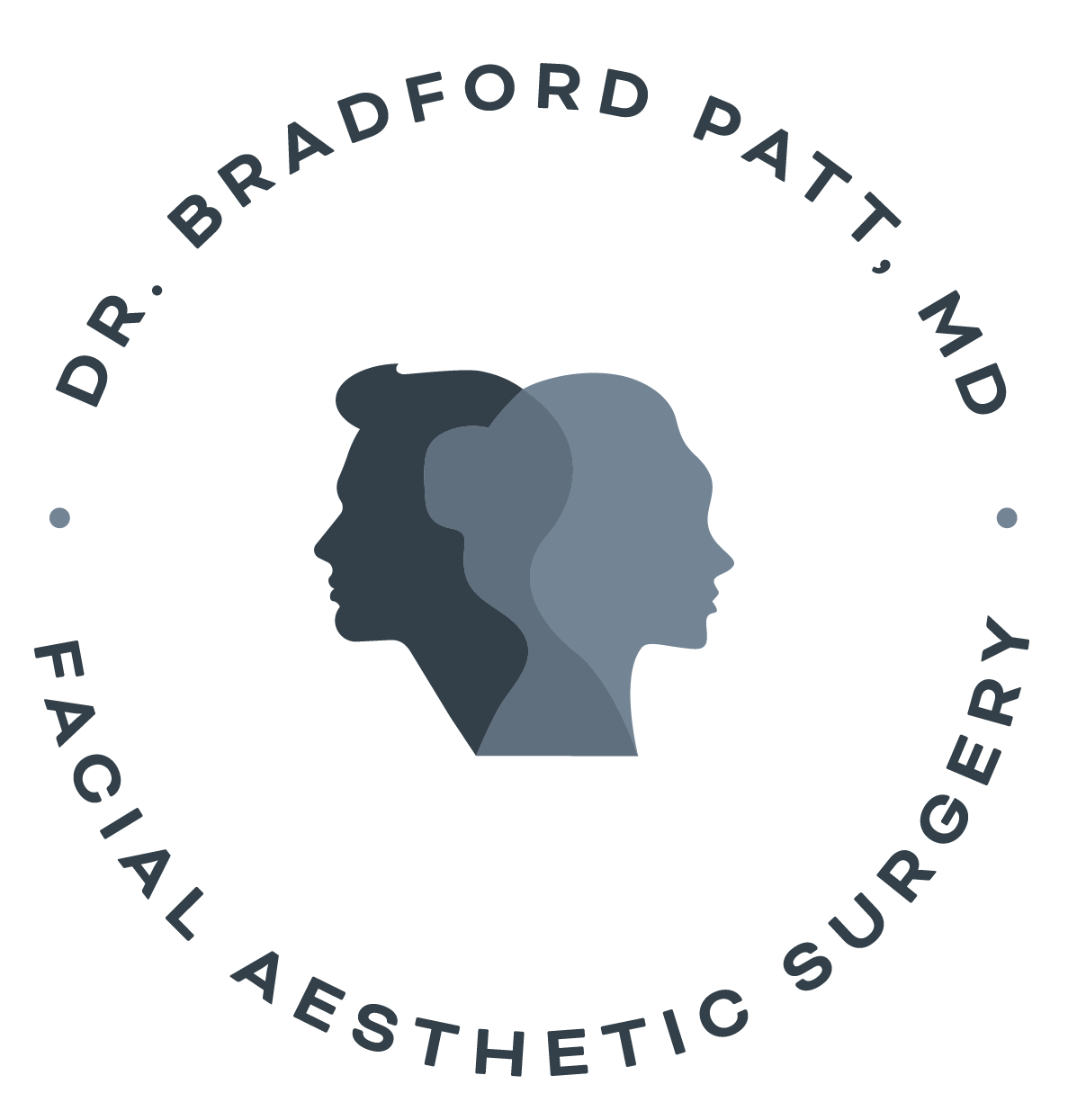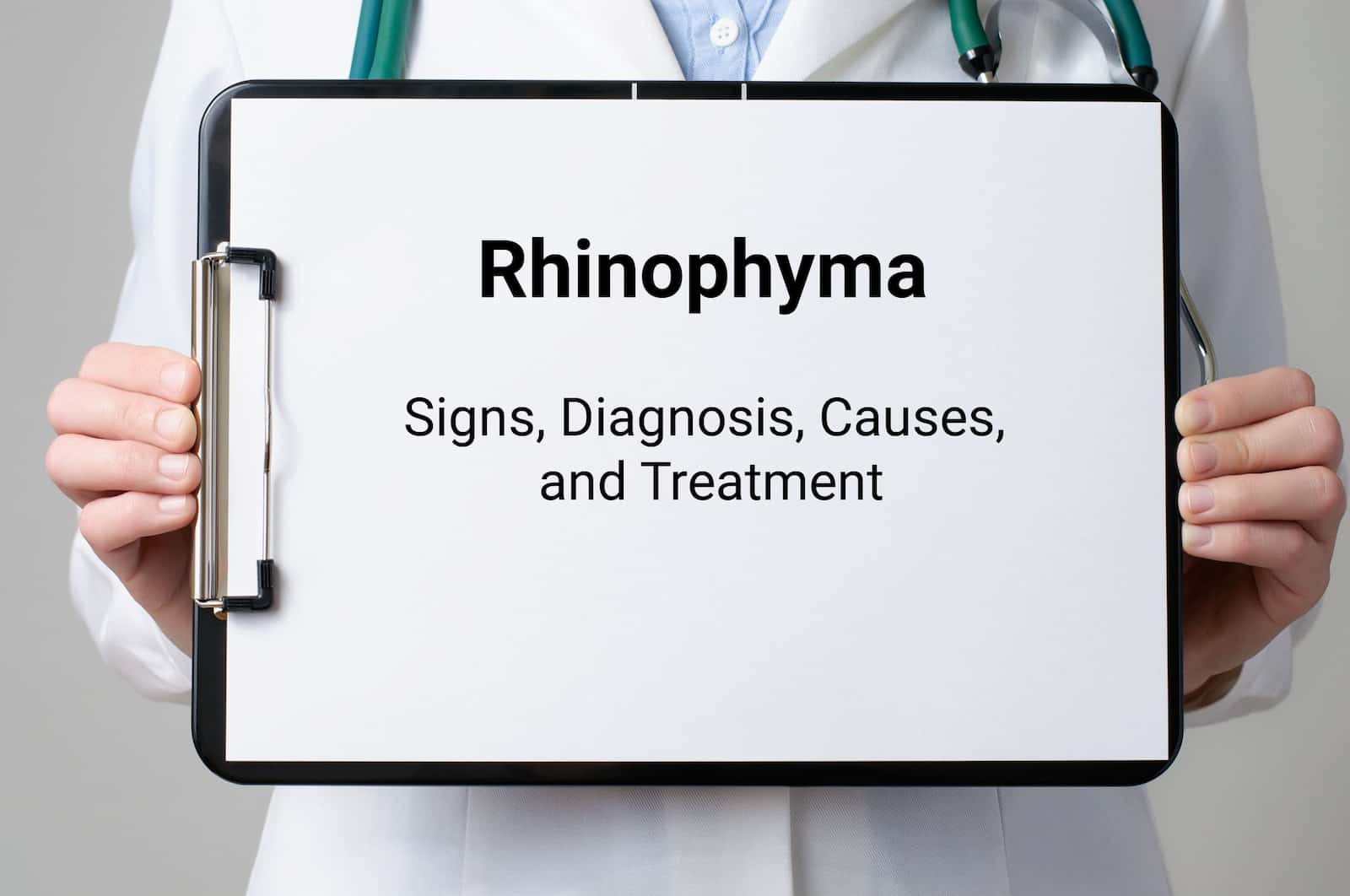What is Rhinophyma?
Rhinophyma is a condition that causes the nasal tip and nose to become enlarged causing cosmetic facial deformities. The underlying cause of rhinophyma is not understood among the medical community, however, a common precursor to this condition is rosacea. Rosacea is an inflammatory condition affecting the skin causing swelling, inflammation, and redness. It can lead to pimple-like breakouts and is known to cause rhinophyma. When rhinophyma is left untreated, it can lead to permanent facial disfiguration, impaired or impacted breathing, and serious mental health impairment.
Signs of Rhinophyma
Early stage rhinophyma symptoms are consistent with those of rosacea and may include facial flushing or redness. As rosacea progresses, rhinophyma takes its place and a person may experience things like:
- An enlarged nasal tip
- A bumpy or ridged texture on the face
- Enlarged pores on the face
- Thickened skin
- Enlarged vessels
- Difficulty breathing through the nose
Those suffering from rhinophyma will see a progressive change in connective tissues as well as an increase in the number of sebaceous glands. People with rhinophyma may also experience an increase in infections or illness because the sebaceous fluids thicken and harbor bacteria more than normal.
Before and After Photo of Rhinophyma Laser Treatment by Bradford Patt, MD


Pre-Treatment 1 Year Post Treatment
Diagnosis of Rhinophyma
Early-stage rhinophyma is often confused with the presence of acne or other acne-producing skin conditions but rhinophyma has a few distinctive characteristics. Diagnosing rhinophyma often begins with a physical examination by a medical professional. Your doctor will begin by visualizing areas of concern to determine if there are definitive signs of rhinophyma present.
While rhinophyma can be diagnosed with non-invasive testing if your doctor suspects the presence of this condition further testing like a biopsy may be initiated to include a biopsy. A biopsy is a minimally invasive test performed by removing a small sample of affected tissues or skin cells that are then sent to the lab for microscopic examinations to determine if abnormal cells or cancerous cells are present. A biopsy is a critical procedure that should be performed on all patients who have been receiving treatment for rhinophyma but have not seen results or improvements in their symptoms.
What causes Rhinophyma?
The cause of rhinophyma is not fully understood but it is thought to be associated with a common skin condition known as rosacea as well as a combination of conditions that impact the nerves, immune system, and blood vessels. The consumption of alcohol or caffeine is thought to worsen rhinophyma and rosacea symptoms as these substances are known vasodilators.
Risk factors for Rhinophyma
Rhinophyma risk factors include things like family history, age, and even gender. Rhinophyma is a condition that gradually produces a worsening of symptoms after the onset of rosacea - a common condition affecting people primarily between the age of 25 to 50 years old. Those who have fair skin, a family history, or frequent skin exposure without proper skin protection are at an increased risk of developing rosacea - the precursor to rhinophyma.
Common risk factors associated with rhinophyma include:
- Fair skin
- Family history of rosacea or rhinophyma
- Have a racial background including English, Irish, Eastern European, or Scandinavian
- Are male
- Between the age of 50 to 70 years of age
While several risk factors can increase your chance of developing rhinophyma, this condition is rare and the exact cause is not known.
Treatment options for Rhinophyma
Rhinophyma treatment is dependent upon the severity of the symptoms present. Based on the symptoms you present with, your doctor will determine if treatment with medication, surgical intervention, or both will yield the best results.
Medications used to treat Rhinophyma
Common medications used to treat symptoms of rhinophyma focus on reducing swelling, redness, and inflammation. While treating rhinophyma with medications does not always yield results, early-stage rhinophyma or rosacea can be treated with medication. Medications may include:
- Oral or topical antibiotics. These antibiotics work to minimize flushing or redness and reduce inflammation that may cause discomfort. Common antibiotics used to treat rhinophyma include Metronidazole, Erythromycin, and Tetracycline.
- Topical medications. Creams, gels, or other topical medications like Tretinoin cream or Azelaic Acid are used to reduce inflammation in an affected area.
- Oral capsules. These medications are used to prevent an overproduction of sebaceous oils from glands and may include medications like Isotretinoin.
Surgical treatment for Rhinophyma
Surgical techniques used to treat rhinophyma are used to achieve a desired cosmetic outcome, reduce symptoms, facilitate adequate breathing, and help improve one’s self-esteem. The outcome of surgical interventions will depend greatly on the skill set the plastic surgeon holds as well as the severity of symptoms and facial deformity.
Surgery for rhinophyma is generally performed by completing five steps:
- Dermabrasion is performed to gently resurface the surface of the skin using a motorized device to prepare the skin for step two.
- Dermaplaning is performed to remove affected or damaged skin without invasive cutting of the skin to prepare the skin for step three.
- Debulking of the skin is conducted by a plastic surgeon with curved scissors to remove skin that has thickened over the progression of rhinophyma. It is generally during this step that a biopsy is performed on a patient with rhinophyma to determine if cancerous cells have formed.
- Electrocautery is used to destroy affected tissue through cauterization with heat.
- Laser use is the final step of surgery for rhinophyma to slightly contour and seal the wound to promote healing.
Surgery is often the most recommended method of treatment when determining the best course of action to treat rhinophyma as a skilled facial plastic surgeon can improve breathing, reduce symptoms, and improve one’s overall physical appearance by removing overgrown or thickened tissue, minimizing enlarged blood vessels, and reshaping a disfigured nose or nasal tip. It is important to understand that surgical treatment for rhinophyma may require multiple surgeries to yield the best results with fewer risks.
The long-term outlook for Rhinophyma
The primary goal when treating rhinophyma is to improve breathing in those who are having a difficult time with a physical obstruction from a nasal deformity, enhance a person’s emotional well-being through improving physical appearances, and reduce symptoms like redness and swelling.
Those with rhinophyma are at an increased risk of anxiety, depression, and emotional distress. It is important to follow up with your doctor during and after treatment as symptoms can appear again after surgery or medication treatment has been completed. In addition, some individuals who are diagnosed with rhinophyma also experience the growth of cancerous cells - most commonly basal cell carcinoma.
Your facial plastic surgeon and primary care provider work together to ensure you are comfortable with all treatment plans, have realistic expectations of the results after treatment, and help to maintain results through aftercare. Consult with your plastic surgeon following treatment to inquire about aftercare to help reduce flare-ups of symptoms.
What can you do to prevent further outbreaks of Rhinophyma?
There is no known prevention for rhinophyma as their exact cause is not understood fully, however, there are a few things that can be done to manage rosacea - the precursor to rhinophyma:
- Wear protective clothing when outdoors
- Use SPF 15 or higher sunscreen
- Reduce stress or anxiety
- Avoid strenuous activity
- Maintain a healthy skincare regimen
Treating Rhinophyma at HCFPS
At Houston Center for Facial Plastic Surgery, our team of specialists, including highly skilled and trained facial plastic surgeons, have been helping patients live a happier life for more than a decade through both surgical and non-invasive treatment options.
Dr. Bradford Patt and the entire staff are dedicated to providing unmatched patient care by listening to every concern and question, using the latest techniques in treatment, and maintaining up-to-date training expertise to ensure minimal scarring and the best possible results after treatment. If you are looking for the top-rated facial plastic surgeons in the Houston area, schedule your consultation today!



